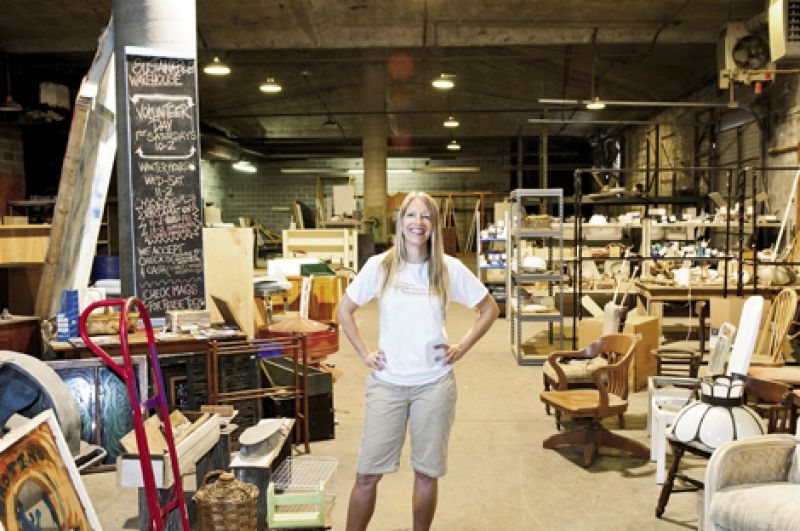
Reduce, reuse, recycle is so ingrained in us that most wouldn’t dare throw a plastic bottle in the trash, right? But what about toilets? Sinks? Windows? They typically end up in landfills, unless a scavenging opportunist scoops them up to sell for scrap. But Rebecca O’Brien, executive director and founder of The Sustainable Warehouse, is working hard to change all of that.
Currently housed in a 120,000-square-foot industrial building in North Charleston, O’Brien’s nonprofit is in its eighth year. From an armory of windows and doors to piles of plank flooring, moulding, and neat stacks of brick, most any salvageable building material can be found and purchased here. But scattered amongst the fixtures and hardware are oddities like traffic lights, church pews, even spans of mini-golf courses and a replica of the Hunley.
O’Brien and her team of two part-time employees and four volunteers regularly answer calls to either strip out a home before demolition (harvesting anything salvageable) or deconstruct and remove an entire building by hand, an arduous process that can take up to a week. On any given day, there’s no telling what O’Brien will have on the warehouse floor or who will walk through her roll-up door to shop the wares.
“Our customer base is everybody,” says O’Brien, noting that the organization receives no grant money or government assistance, so sales revenue is their lifeline. “We get restaurateurs, architects, designers, and homeowners; photographers who borrow things for shoots; your neighborhood contractor. Everybody.”
O’Brien’s purpose is two-fold. First and foremost, she wants to keep usable items out of landfills. But she also partners with a couple of small community organizations to help people who desperately need to repair their houses but just can’t afford to do so. “We’re working with an 84-year-old lady now who has no tub and no hot water. Everyone bathes out of the kitchen sink,” says O’Brien. “She has a daughter who’s disabled, and she really needs the help.”
Already this year, O’Brien estimates that she’s kept about 75 tons out of the landfill and anticipates that approximately 20 percent of that will find a new home through her charitable projects. “We’re getting materials to people who need them,” she says. “We don’t give handouts, but we do want to help people have a better quality of life.”